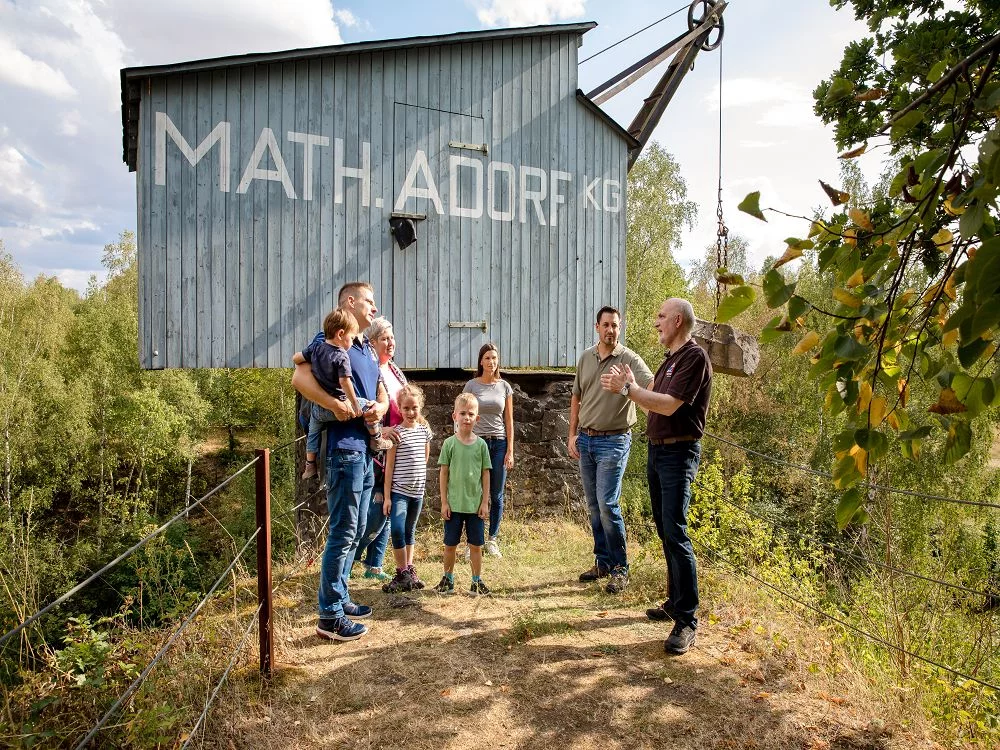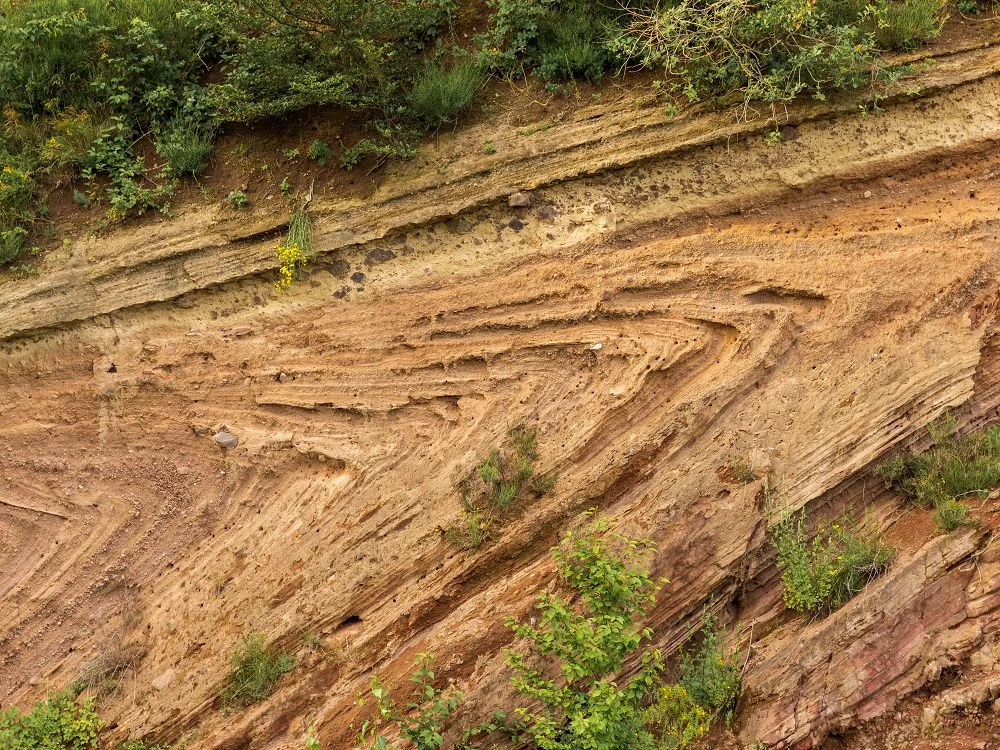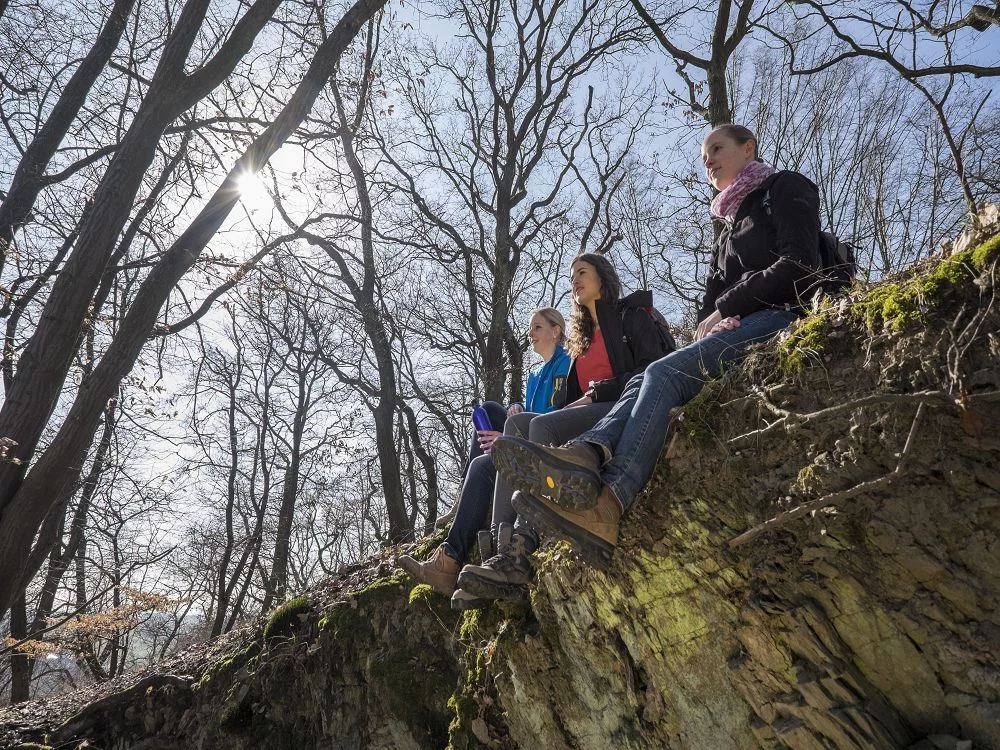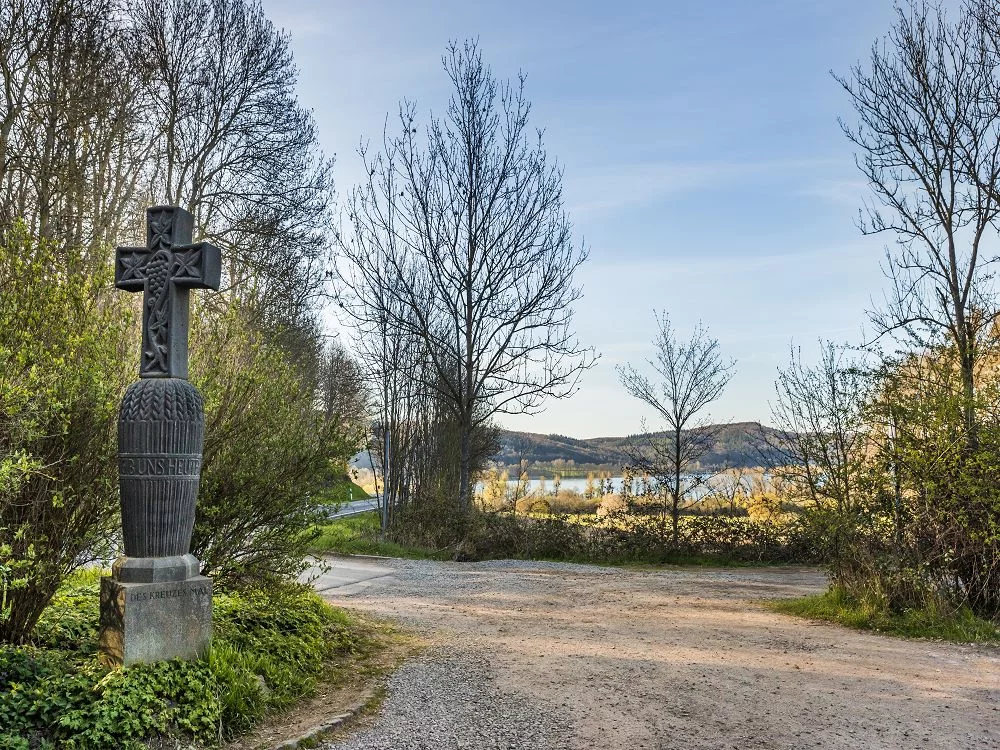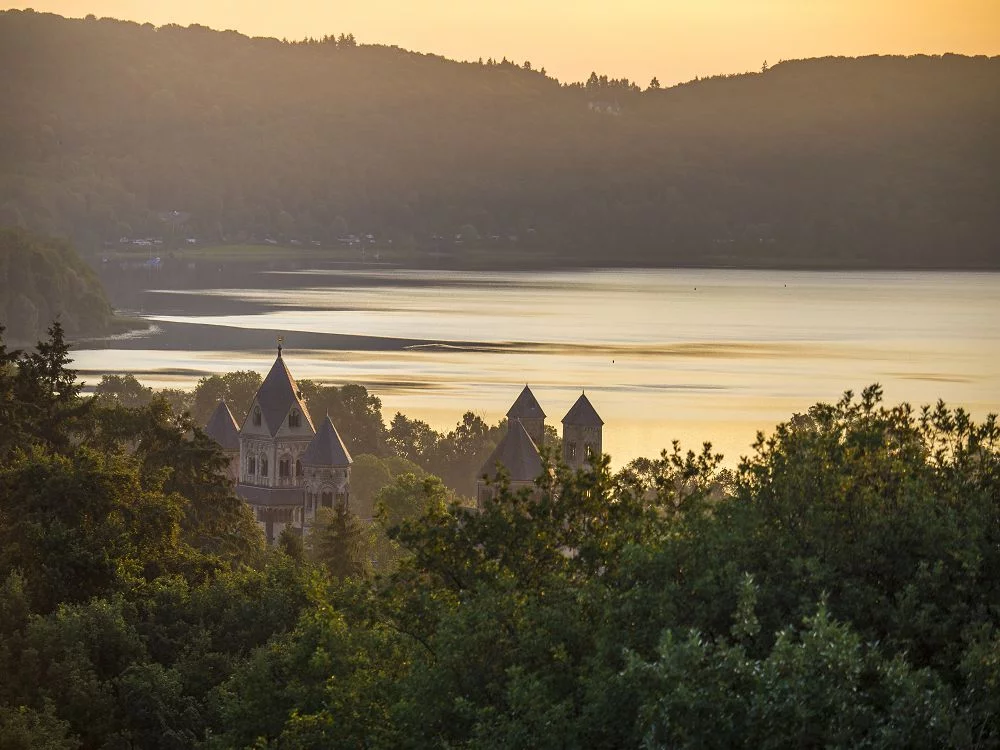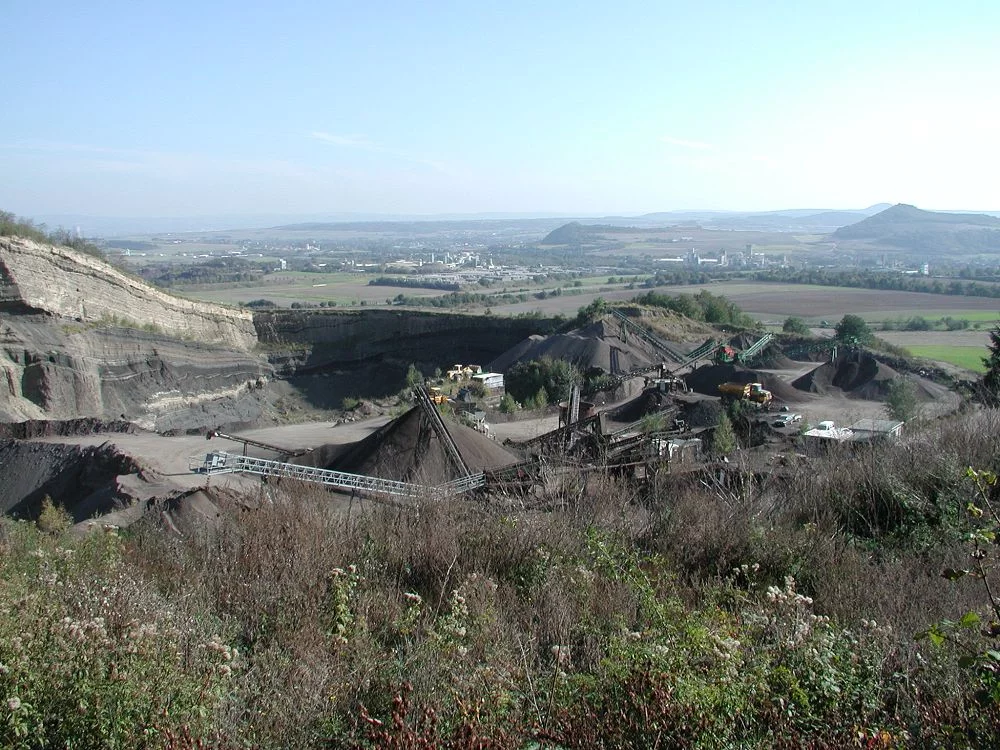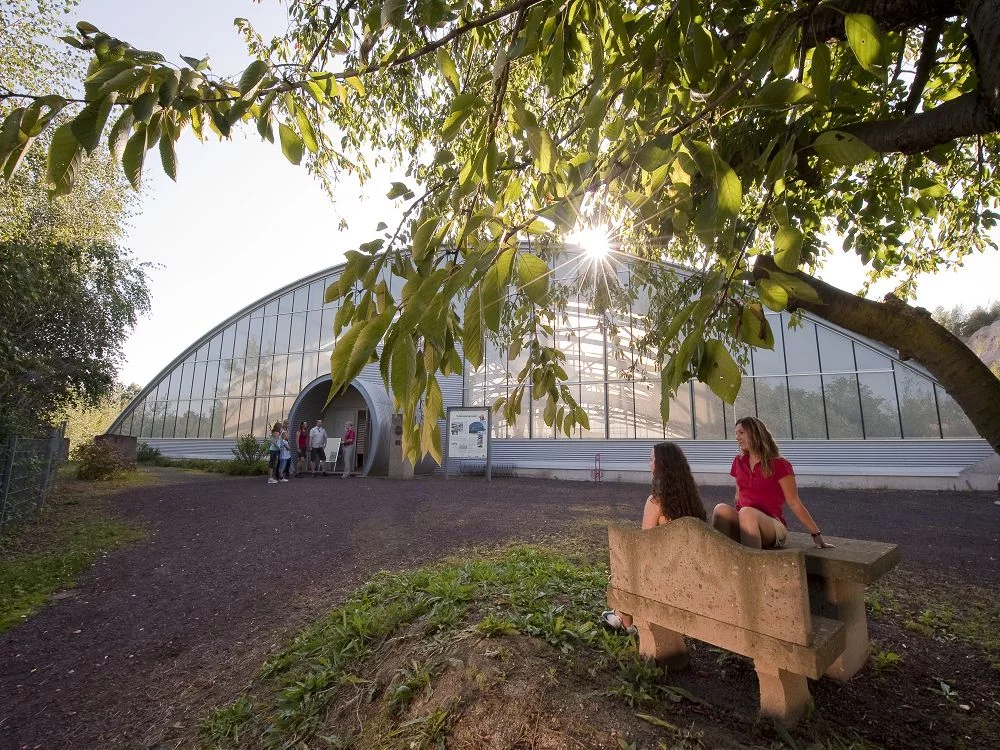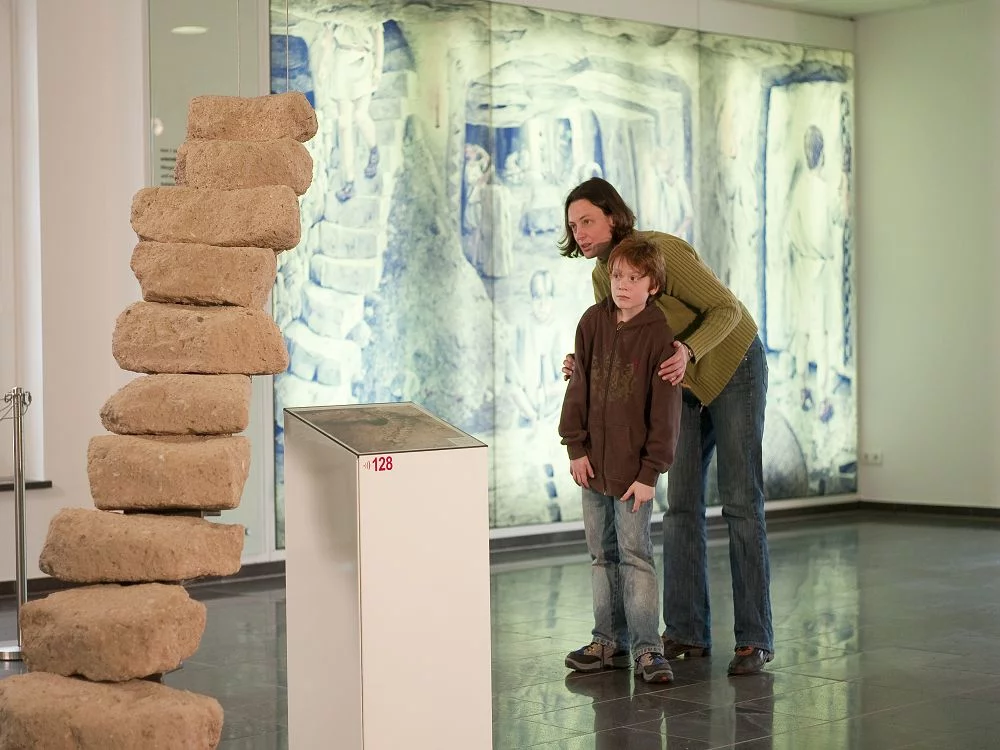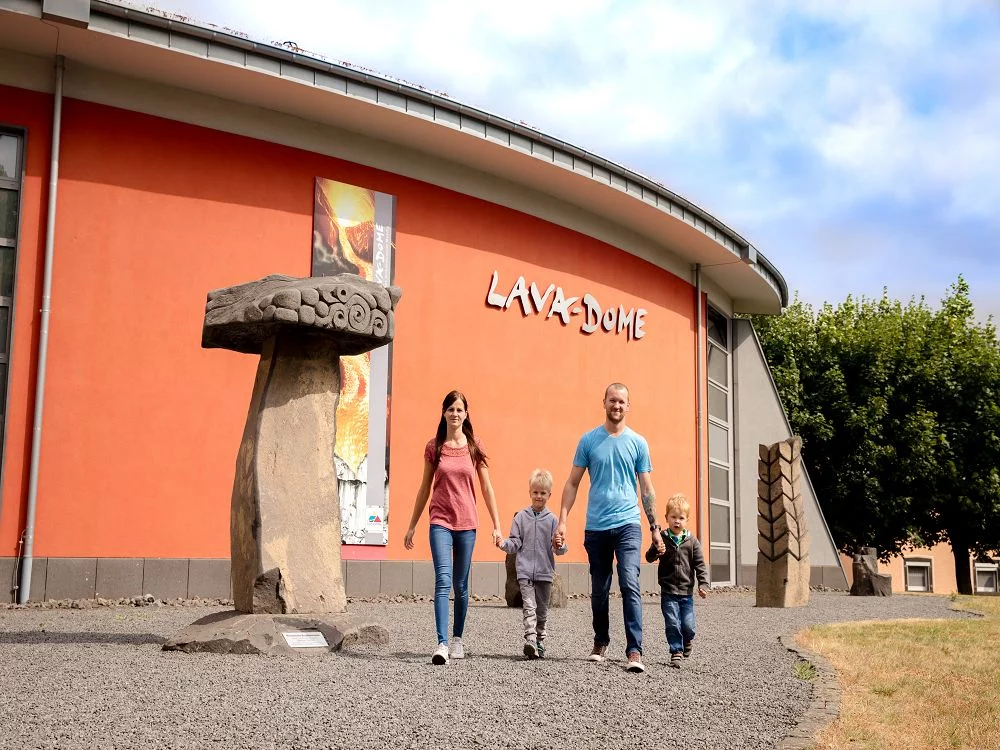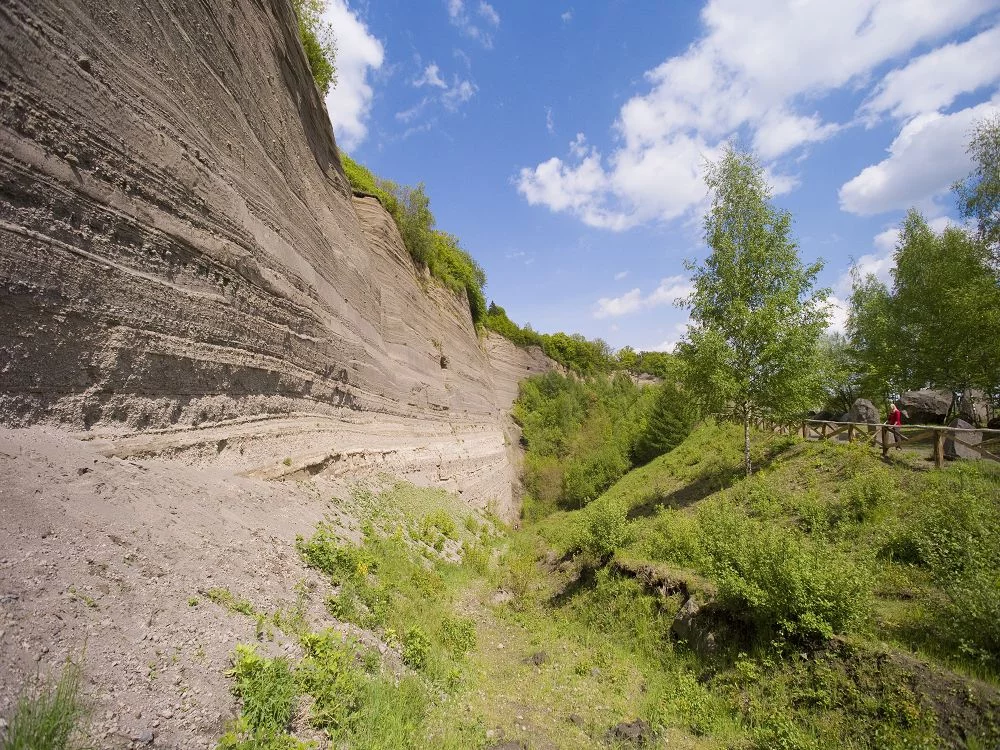The Steffelkopf cinder cone is underlain by a maar, as are most of the cinder cones in the Western Eifel. The newly created volcano garden is an excellent place to reconstruct the volcanic activity in the area. The Laach maar to the north of the Steffelnkopf was formed first.
It formed on a north-south striking fault, where the middle Bunter sandstone in the east sank into the Lower Devonian rocks in the west. The Maartephra are completely preserved in a profile below the volcanic garden and show excellent antidune structures. This was followed by the initial maar phase of the Steffelnkof cinder cone on the same fault without any temporal interruption, which is characterized by “channel” structures.
This was followed by a temporal interruption in volcanic activity, during which soil formation took place. Renewed volcanic activity began with a tuff ring phase in the area of the Laach maar, followed by cinder eruptions from the Steffelnkopf volcano. This last phase filled the former maar crater of the Steffelnkopf volcano with cinders and agglutinates and formed the former topographical elevation.

